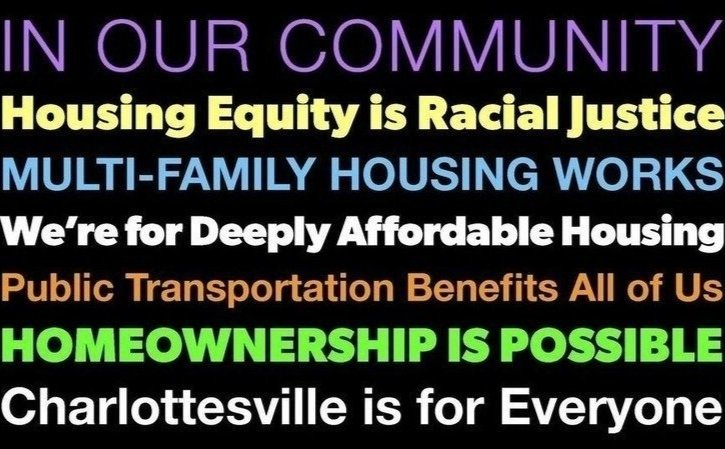Housing
Land Use
Thanks to the new zoning code enacted in Charlottesville it is now possible to be build more kinds of housing for more kinds of people in more parts of the city. There are more opportunities for building accessory dwelling units and other forms of “missing middle” infill development.
Affordable Housing
Charlottesville’s public housing stock is many decades old and has been chronically underfunded. Public housing residents deserve safe, well-maintained homes and competent management, and the city should fully fund its Affordable Housing Fund.
Transportation & Mobilty
Public Transit
Buses and shuttles are a cheap and environmentally friendly to get around Charlottesville. Low-income residents and people with disabilities are especially likely to rely on transit. Charlottesville should encourage residents to take advantage of our public transit system by increasing bus frequency and adding shelters to bus stops. We should also pursue state funding to make public transportation permanently free. Free buses would pay for themselves with money saved on road maintenance and parking garages.
Walking and Cycling
Almost half of Virginia’s carbon emissions come from transportation, so supporting walking and biking over driving should be part of Charlottesville’s climate strategy. But our government spends much more on car infrastructure than it does on pedestrians and bikers, as demonstrated in its recent Capital Improvement Plan budgets. And because the city prioritizes drivers over pedestrians and bikers, walking and biking can be dangerous. Charlottesville should treat walking and biking as a first-class concern and not an afterthought.
CLIMATE & ENVIRONMENT
CLIMATE CHANGE
There is no time to lose in addressing climate change, and meaningful change must happen at the local level — from rooftop solar and other household energy shifts to large-scale renewable energy projects. But renewable energy production is not the whole story. All of the elements of Livable Cville’s mission — including increased housing density, improved public transit, and safer pedestrian and bicycle infrastructure — serve our common climate goals by reducing reliance on fossil fuels and overall energy use.
environmental justice
As our community works toward carbon neutrality and a sustainable future, we must make sure no one is left behind or unfairly saddled with the burdens of that future — particularly members of lower income or historically dispossessed neighborhoods. Charlottesville and Albemarle County must build more housing, including much more affordable housing, and make significant commitments to non-car-centered infrastructure and renewable energy so that all members of our community can thrive.






